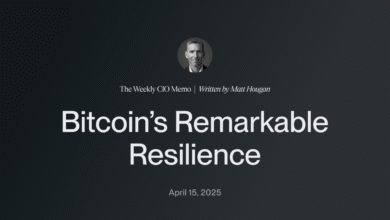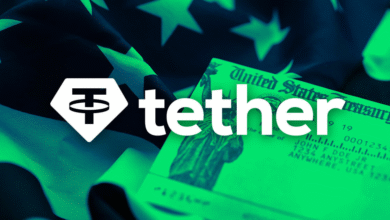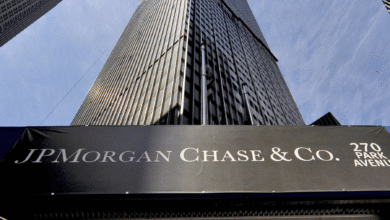PUMP Token ICO Raises $500M in Just 12 Minutes

The recent PUMP token ICO has taken the cryptocurrency world by storm, generating an astonishing $500 million in just 12 minutes during its public token sale. Conducted by Pump.fun, a prominent platform for meme coin creation on the Solana blockchain, this ICO saw 125 billion PUMP tokens sold at an attractive price of $0.004 each. As interest in meme coin investment surges, fueled by the success stories of cryptocurrencies like DOGE and TRUMP, the swift sellout of the PUMP cryptocurrency exemplifies the growing demand within this market niche. This record-breaking token offering underscores Pump.fun’s commitment to expanding its platform and enhancing trading features for its community. With such substantial backing, the future looks bright for both Pump.fun and its dedicated investor base, all keen to profit from the booming meme coin sector.
The launch of Pump.fun’s PUMP cryptocurrency through an initial coin offering has captured the attention of investors worldwide. This rapid fundraising event highlights a significant trend in the digital finance landscape, especially in the realm of meme-inspired tokens. By leveraging Solana’s advanced blockchain capabilities, Pump.fun has positioned itself as a frontrunner in the meme coin ecosystem. The recent sellout of the ICO not only reflects a robust appetite for innovative token solutions but also showcases the effective merging of entertainment and investment in the crypto sphere. As the platform prepares for future developments funded by this monumental sale, many anticipate the next wave of exciting offerings in the digital currency market.
The PUMP Token ICO: A Record-Breaking Success
The recent PUMP token ICO has set unprecedented records in the cryptocurrency space, raising an astonishing $500 million within a mere 12 minutes. This lightning-fast sellout not only showcases the immense popularity of Pump.fun as a meme coin platform on the Solana blockchain but also highlights the escalating demand for innovative digital tokens. The enthusiasm surrounding meme coins has surged, with townspeople eagerly participating in this unique investment opportunity, thus affirming the potential behind the PUMP cryptocurrency.
The initial coin offering of PUMP tokens was designed to democratize access to venture funding in the crypto space, allowing a wide array of investors to partake in the excitement. The fast-paced sale consisted of 125 billion PUMP tokens, priced at just $0.004 each, facilitating a new wave of meme-inspired cryptocurrency creation. This phenomenal turnout illustrates not only a robust community backing the project but also a solid interest in meme coin investments, which have gained significant traction in the financial landscape.
Harnessing the Power of Meme Coins with PUMP
Pump.fun stands at the forefront of the meme coin revolution, providing individuals with the tools to create and trade their own meme-centric cryptocurrencies. As traditional investments face volatility, many investors are gravitating towards a more playful approach, evidenced by the success of mainstream tokens like DOGE and PEPE. The allure of creating custom coins allows for greater community engagement, and with PUMP’s ICO raising substantial funds, the platform is poised to expand its features and capabilities to cater to this trend.
Investing in meme coins like PUMP integrates both potential financial rewards and a strong sense of community, making it an attractive option for many. The unique characteristics of the PUMP cryptocurrency, paired with the functionality of the Pump.fun platform, are set to transform how users interact within the crypto space. As meme coins become an undeniable trend, Pump.fun aims to stay ahead of the curve, with its ICO success paving the way for significant innovations.
Investment Opportunities in Pump.fun’s Ecosystem
The overwhelming success of the PUMP token ICO is not just about the financial figures; it reflects a robust ecosystem ripe for investment opportunities. With the raised capital exceeding $1 billion—including prior private sales—Pump.fun is well-equipped to enhance its platform offerings. This includes the potential for social trading features that could attract a wider audience of investors seeking engaging and community-oriented investment experiences within the meme coin sphere.
Moreover, with token allocations designating 24% to community initiatives and 20% to its team, it highlights Pump.fun’s commitment to fostering growth within its own ecosystem. By investing in collective engagement and team development, the platform is positioning itself as a leader in the meme coin market, offering promising prospects for future growth, thus ensuring that investors are not just passive participants, but rather active contributions to the evolving narrative of the PUMP token.
Navigating the Global Landscape of Cryptocurrency Investment
As the PUMP token ICO unfolds, its implications extend far beyond the immediate financial gains for its investors. Despite the barriers set for U.S. and U.K. investors due to regulatory constraints, the focus has shifted predominantly towards Asian and European markets. This broad international scope suggests a growing global interest in meme coin investments and cryptocurrencies that leverage humor and culture as key branding aspects.
The successful ICO not only signifies an impressive feat for a relatively new player in the market but also reflects shifting dynamics in the way cryptocurrencies are perceived across different regions. By carefully navigating these landscapes and adapting to the regulatory frameworks and market demands, Pump.fun is set on a path that reinforces the idea of meme coins as a legitimate asset class in the broader investment arena.
Future Innovations Post-PUMP Token Sale
With the successful completion of the PUMP token ICO, Pump.fun is poised to implement significant innovations aimed at enhancing user experience and engagement. The funds raised are earmarked for critical platform upgrades and new features, positioning the platform to keep pace with the dynamic needs of its community. Social trading features, for instance, are set to revolutionize how users interact with each other, thus creating a highly interactive investment environment.
Additionally, enhancements to trading capabilities and infrastructural backings, like the recent acquisition of Kolscan, assure users of heightened security and efficiency. By actively pursuing development that focuses on user-friendly features, Pump.fun stands ready to elevate the meme coin experience, aligning investments with growing technological advancements within the blockchain framework.
Impact of Market Sentiment on Meme Coins and PUMP
The euphoria surrounding the rapid sellout of the PUMP token ICO accentuates the critical role market sentiment plays within the cryptocurrency landscape. Recent trends show that as enthusiastic investors seek out meme coins, the sentiment can drastically influence both pricing and adoption rates. The pre-launch excitement, coupled with the tremendous results of the ICO, highlight how collective enthusiasm can create upward momentum for cryptocurrency investments.
Understanding market sentiment can be crucial for potential investors in meme coin ventures. The thrill experienced during the PUMP token sale echoes a growing recognition of how meme coins, despite their light-hearted nature, can garner serious financial backing and legitimization within the crypto space. For PUMP and similar tokens, the influence of active community engagement forms a core part of their market narrative, serving to increase visibility and acceptance.
PUMP Token Utility and Its Role in the Ecosystem
The utility of the PUMP token within its ecosystem is pivotal to the platform’s operational and strategic framework. Tokens serve not only as a means of participation but are also integrated into various aspects of the Pump.fun platform, including rewards and fee rebates. This means that holders of PUMP tokens can actively engage in platform loyalty programs, incentivizing long-term investment and usage of the platform.
Moreover, the planned enhancements and developments in the pipeline are expected to further integrate PUMP tokens in novel ways, potentially through governance mechanisms or unique features allowing users to influence platform developments. Such utility ensures that as the ecosystem grows, so does the intrinsic value of holding PUMP tokens, aligning the interests of both the platform and its users.
Challenges and Risks Associated with Meme Coin Investments
Investing in meme coins, including PUMP, comes with its own set of challenges and risks that potential investors should consider. Meme coins often experience high volatility, swayed by market trends and social media movements, leading to unpredictable price shifts. Additionally, regulatory challenges remain a concern, as governments worldwide adapt their frameworks to this emergent asset class.
However, understanding these risks allows investors to approach the meme coin market with greater insight. While the alluring potential for gains might encourage impulsive investments, a measured approach that includes awareness of market fluctuations and regulatory impacts can equip investors with strategies for sustainability and long-term participation.
Community Engagement and its Importance in the Success of PUMP
At the heart of successful cryptocurrency projects lies community engagement, and Pump.fun’s achievements underscore this belief. The sold-out PUMP token ICO illustrates how robust community interest can prompt significant investment and participation. Engaging users not only during the token sale but throughout the platform’s lifecycle is crucial for building lasting relationships and securing platform loyalty.
By fostering an inclusive environment where users feel valued and heard, Pump.fun aims to cultivate a loyal community of token holders. This engagement is furthered by features that encourage users to contribute ideas and feedback, ultimately leading to iterative improvements driven by the community itself. Such active involvement transforms the user experience and enhances the overall appeal of the PUMP cryptocurrency, aiding its growth trajectory.
Frequently Asked Questions
What is the PUMP Token ICO and how much did it raise?
The PUMP Token ICO is the initial coin offering for the PUMP cryptocurrency from Pump.fun. It raised an impressive $500 million, selling out in just 12 minutes, demonstrating significant interest in the meme coin investment space.
How does the Pump.fun platform relate to Solana cryptocurrency?
Pump.fun operates on the Solana cryptocurrency network, providing a platform for users to create and trade meme-inspired cryptocurrencies like the PUMP token. The use of Solana’s blockchain ensures fast transactions and scalability for the platform.
Why is the PUMP token considered a meme coin investment?
The PUMP token is categorized as a meme coin because it is associated with the cultural phenomenon of meme-inspired currencies. As part of the Pump.fun platform, it capitalizes on the popularity of meme coins, attracting investors interested in this vibrant segment of the cryptocurrency market.
What happened during the Pump.fun token sale?
During the Pump.fun token sale, the ICO sold out within 12 minutes, raising $500 million. This rapid sellout indicates strong demand for the PUMP cryptocurrency, especially amidst growing interest in meme coins.
What is the significance of the $500 million raised from the PUMP Token ICO?
The $500 million raised from the PUMP token ICO is significant as it will be used to fund platform upgrades, introduce social trading features, and provide incentives such as fee rebates within the Pump.fun ecosystem, enhancing its offerings.
How were the PUMP tokens allocated following the ICO?
Following the ICO, PUMP tokens were allocated with 24% for community initiatives, 20% for the team, and 13% for existing investors, ensuring a robust distribution aimed at supporting the platform’s growth.
Is the PUMP Token ICO open to U.S. and U.K. investors?
No, U.S. and U.K. investors were barred from participating in the PUMP Token ICO due to regulatory restrictions, which shifted the focus to Asian and European investors.
What are the risks associated with investing in PUMP cryptocurrency?
Investing in PUMP cryptocurrency involves risks such as high volatility common in meme coins and potential regulatory challenges. Investors should consider these factors before investing.
When can trading of the PUMP token be expected to begin?
Trading of the PUMP token is expected to begin on July 18, after the ICO sellout and the immediate unlocking of tokens.
What are the future plans for Pump.fun after the success of the PUMP Token ICO?
After the success of the PUMP Token ICO, Pump.fun plans to use the funds to enhance its platform, including acquiring wallet tracker Kolscan and developing additional features to support the community and users.
| Key Points | Details |
|---|---|
| PUMP Token ICO | Raised $500 million in 12 minutes. |
| Token Details | 125 billion PUMP tokens offered at $0.004 each (12.5% of total supply). |
| Launch Timing | July 12 at 2 p.m. UTC. |
| Purpose of Funds | To fund platform upgrades, social trading features, and ecosystem incentives. |
| Interest in Meme Coins | Surge in interest with assets like DOGE, TRUMP, and PEPE rallying pre-launch. |
| Regulatory Challenges | U.S. and U.K. investors were barred. Focus shifted to Asian and European markets. |
| Post-ICO Trading | Trading expected to begin by July 18, with tokens unlocking immediately at launch. |
| Market Demand | Pre-sale derivatives trading indicated a 40% premium over the ICO price, showing high demand. |
| Analytical Risks | Volatility of meme coins and regulatory challenges noted by analysts. |
Summary
The PUMP token ICO has generated immense excitement, raising $500 million in just 12 minutes. This highlights the growing market interest in meme-based cryptocurrencies, paving the way for innovative platforms like Pump.fun to thrive. With careful management and strategic funding allocation, the PUMP token aims to enhance user experiences and establish a solid presence in the cryptocurrency landscape.




